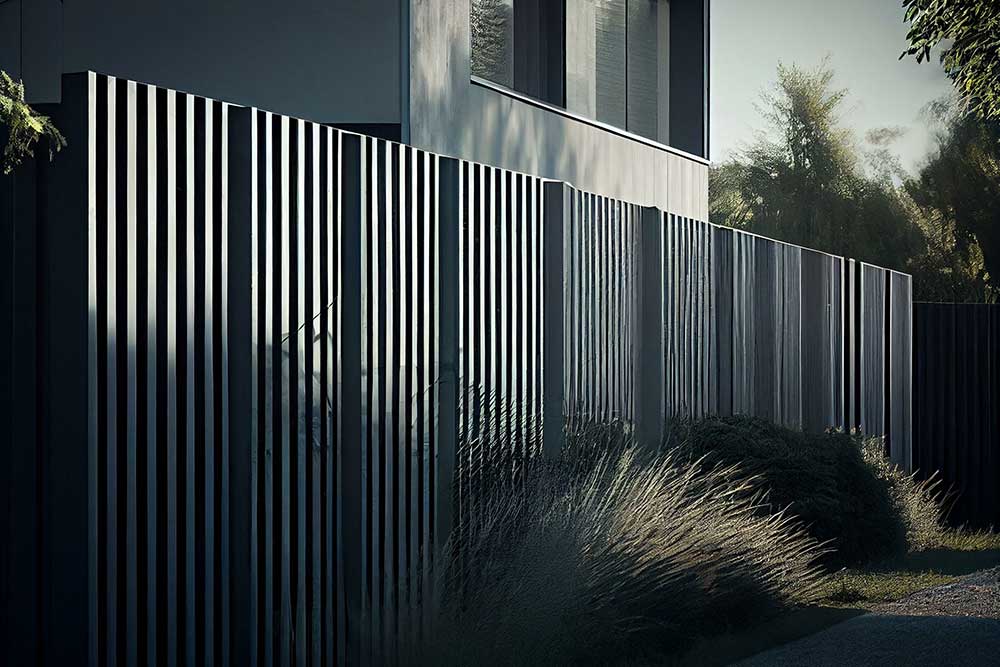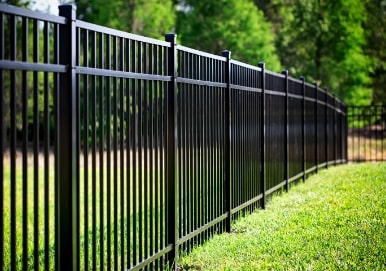Installing an aluminum fence can be a smart choice for home and business owners. Not only do aluminum fences add a polished look to your property, but they are also durable and low-maintenance, making them a practical option for securing outdoor spaces. In this guide, we will explain the steps for aluminum fence installation and share helpful tips to make your project successful. Whether you’re looking to enclose your backyard, secure a pool area, or create boundaries, this guide will help you achieve professional results.

Why Choose Aluminum Fencing?
Aluminum fencing is a versatile and appealing option for both residential and commercial properties. It offers a sleek appearance that complements a variety of architectural styles. Its long-lasting construction withstands weather conditions without rusting, which makes it ideal for outdoor use. Aluminum fences are lightweight yet sturdy, simplifying the installation process. By choosing aluminum, you’ll benefit from a fence that enhances the visual appeal of your property while requiring minimal upkeep.
Planning Your Fence Installation
Before beginning the installation process, it’s important to plan the layout of your fence. Start by identifying the boundaries of your property and determining the exact placement of your fence. Make note of where corner posts, gate posts, and line posts will go. Using a string line and wooden stakes can help you create a precise guide for digging post holes. Be sure to check for utility lines and other obstacles that could affect the installation. Proper planning ensures your fence aligns with your property lines and local zoning regulations.
Preparing the Materials and Tools
Having the right materials and tools on hand is key to a smooth installation process. Common tools include a post-hole digger, a level, a cordless drill, and a concrete mix. You’ll also need string, wooden stakes, and screws for securing panels to posts. Aluminum fence panels, posts, and gates should be ordered based on your measurements. By organizing all materials and tools ahead of time, you can focus on the installation without interruptions.
Installing Fence Posts
Begin by digging holes for the posts. These should typically be 24 to 42 inches deep, depending on your local frost line, and about 6 inches wide. Once the holes are ready, place a post into each hole and check that it is plumb using a level. Fill the hole with a mixture of concrete and water, leaving about two inches at the top for packed dirt. This will help stabilize the post and keep it securely in place. Allow the concrete to set before attaching fence panels.
Attaching Aluminum Fence Panels
After the posts are firmly set, you can attach the aluminum fence panels. Each panel is designed to slide into pre-punched holes in the posts. Use self-tapping screws to secure the panels to the posts. Work on one section at a time to maintain accuracy and alignment. As you progress, double-check the alignment of your fence to avoid any uneven sections. Adjustments can be made before the concrete fully cures.
Hanging The Gate
Once the fence panels are installed, it’s time to hang the gate. Begin by attaching hinges to the gate frame, placing them about six inches from the top and bottom. Secure the gate to the gate posts, making sure it is centered within the opening. Attach the latch according to the manufacturer’s instructions and test the gate to confirm it opens and closes smoothly. Avoid using the gate heavily during the first 24 hours to allow the concrete to fully harden.
Understanding Fence Grades for Your Project
When choosing aluminum fencing, it’s important to consider the different grades available. Residential-grade fencing is lightweight and cost-effective, making it a popular choice for homes. Commercial-grade fencing, on the other hand, offers added strength and durability, ideal for securing businesses and public spaces. For industrial properties or high-security areas, industrial-grade fencing provides maximum strength and longevity. Selecting the appropriate grade depends on your property’s needs and the level of durability required. Each grade is designed to withstand varying levels of impact and environmental stress, ensuring your fence is built to last.
Customizing Your Aluminum Fence
Aluminum fences offer flexibility in design, allowing you to select colors, heights, and decorative features that suit your preferences. Whether you prefer a simple, classic look or something more ornamental, aluminum fences can be tailored to match your vision. Consider adding post caps, arched gates, or decorative panels to enhance the overall appearance. These details can elevate the aesthetic appeal of your fence while maintaining its functionality.
Dealing With Slopes and Uneven Terrain
For properties with sloped or uneven terrain, aluminum fences can be adapted using two methods: racking or stepping. Racking involves angling the panels to follow the slope of the ground while stepping involves installing panels in a stair-step pattern. Each method has its advantages depending on the steepness of the slope and the style of the fence. Good Neighbor Fence can guide you in selecting the best approach for your property.
Maintenance Tips for Aluminum Fences
One of the main benefits of aluminum fencing is its low maintenance. Regularly clean the fence with mild soap and water to remove dirt and debris. Inspect the fence periodically for loose screws or damaged sections and make any necessary repairs promptly. Aluminum does not rust, but maintaining the integrity of the finish will help it retain its appearance for years to come.
Long-Term Benefits of Aluminum Fencing
Aluminum fencing is an investment that adds lasting value to your property. Its corrosion-resistant properties make it an ideal choice for areas prone to moisture, ensuring it maintains its structure and appearance over time. Unlike wood or steel, aluminum requires no staining or rust prevention treatments, saving you time and money on maintenance. Additionally, its sleek and modern design enhances curb appeal, which can increase property value. With its combination of practicality and aesthetic appeal, aluminum fencing is a versatile solution for home and business owners.
Why Work with Us?
While installing an aluminum fence can be a rewarding DIY project, working with professionals offers several advantages. At Good Neighbor Fence, we employ experienced in-house employees who are skilled in delivering high-quality results. Our team takes the time to understand your needs and create a fencing solution that aligns with your goals. We also include workmanship warranties with all new installations to give you peace of mind.
If you’re ready to install an aluminum fence that enhances the beauty and security of your property, we’re here to help. Reach out to Good Neighbor Fence today to get started on your project. Get a quote today.





